Spotting and Stalking Elk:
Building the Skills Never Ends
Spotting and stalking elk is generally accepted as more successful than stand hunting, unless you’ve patterned some elk and think they will do the same thing on the day you plan to sit and wait. Stand hunting sometimes pays off, but eventually elk movement patterns will change.
Elk may be in the deer family, but they can’t be successfully hunted like deer repeatedly. They are just not that territorial. Elk are much more nomadic than deer. They respond quickly to hunting pressure or weather and food changes and can relocate many miles overnight, or even mid-morning.
For that reason, “spot and stalk” has become the preferred method of hunting elk. Good optics can allow you to locate elk across a drainage before making plans to stalk up closer.
Recent Articles
-
Elk Calling Done Right: Making Elk Sounds that Get You Close to Elk
Elk calling requires an understanding of what elk talk means and when they are used. With understanding and practice you can learn elk talk to use elk hunting calls effectively.
"Spot" With Your Ears
During the elk rut, “spotting” can be done with the ears, since they are so vocal in the early fall. With practice you can learn to tell about how far away a bugle or other elk talk is from you. This is definitely a guess because of wind, terrain, your own hearing, or other factors that affect how your ears pick up the sound.
The process of stalking elk after “spotting” them by sound can be very productive, but assume that the elk you heard could be closer than you think. On the other hand, it/they might be moving away from you as you begin the process of stalking elk for a shot. If you’re making elk sounds yourself, the elk you heard might be moving toward you, or away, depending on what you just “told them” and what their mood and situation is.
I have bumped elk many times by underestimating how close they were when I heard them. Besides, the elk you hear may not be the closest elk to you!
If the elk sound was crisp and clear they’re close, possibly around a hundred yards or so. If you hear very crisp, clear cow and calf talk, they’re really close, possibly 50 to 60 yards away. If you’re hearing huffing, quiet grunting without bugles… very close! If you hear glunking and foot fall, you are right in their living room! (Click here to listen torecorded elk sounds) If you’ve played the wind right and are down wind from them, you should be smelling elk at that point.
Moving In for the Kill
Stalking elk after spotting them visually creates a much better “guess” as to where they will be when you get close enough for a shot. If you’re carrying a rifle, be quiet and work toward an elevated opportunity for a shot, if possible, without getting busted. The topography and ground cover may not provide what you need for that. If you have to get close for a shot with rifle or bow, take your time and use the environment for cover until you’re ready to put a site on your quarry.
Once you get pretty close, it’s best to slide a little out of “silent mode” and assume they can hear you. Work the wind so they won’t smell you, hopefully. Go ahead and make some light, calm elk sounds: footfall, twig snapping, elk chirping, calm cow or calf talk, etc. (To practice making elk sounds click here.) As soon as you begin to think a shot opportunity is imminent, shut up and “still hunt”, or just wait for them to come to you. Especially if they are moving toward you.
Definition of "Still Hunting": extremely observant hunting mode when quarry is suspected of being in the immediate area; watching for an imminent opportunity for a kill, moving your body silently and very, very slowly or not at all.
Infiltrate the "Safe Zone"
When Stalking Elk
A calling partner(s) behind you can create a safe zone that elk will walk right through, providing you a chance to blow it or make it happen. (The former happens more often than the latter with a bow!) If you’re doing your own calling, when you can still move without being seen, do some appropriate elk talk and then quietly, but quickly cut off some distance between where you called and the elk. The elk will know where the call came from. Hopefully they will not know where you moved up to. Don’t let the wind give you away.
If you get busted in the middle of stalking elk and the herd bolts at a run, relax and reorganize. If possible, try to get ahead of them by flanking them downwind. Or, just let them go until another day, so they don't get pressured to move into the next county.
If you got caught making small movements, you are going to have to play the stare/statue game. It will last up to three minutes, or so. The longer the stare, the better your chances of getting away with it, temporarily. The one(s) who saw you will keep checking looking back your way. If you disappear, by ducking down when they are not looking, they will then know there is something there. That's when I usually back (or crawl) away.
In 2014 I discovered the HECS Stealthsuit. I quickly became confident that I could get away with "busted" small movements more often. An elk would see me move my bow, or range finder. I would freeze, the elk would look briefly and go back to grazing. The HECS suit limits one more opportunity they have to "sense" your presence.
Stop Acting Like a Human
Here's an -outside-the-bod idea: If one elk in the herd sees you move and is staring at you and you know you are pegged, simply stop acting like a human. If the elk that spotted you is just standing there staring, it is trying to process what it is seeing. Try to make it think it sees the shape of a calm grazing animal, instead of a human.
Try bending over at the waste and calmly begin “feeding” and move slowly behind some cover before you become human again. You might be surprised to see how often you get away with what one elk hunting book author
(Elk Hunting Guide, Tom Airhart) called a “duck walk”.
If you want to grab a leaf or two with your mouth, now might be the time to really look silly! Go for it. The more you look and act like just another grazer, the less you look like a predator.
If you stand there and stare at an elk eye to eye, it will soon decide you're human, so it will be all over anyway. Our predator eyes are set very close and are “telescopic”, focusing on one spot. Non-predator animals have great peripheral vision with wider set eyes, so don’t make eye contact with an elk (or other game). They will soon flee the recognized predator stare.
I’ve watched my cats and German Short-haired Pointer sneaking up on birds. They almost close their eyes and avoid direct eye contact as they stalk. If you’re close enough for the elk to see your eyeballs, try not to let them!
One time when stalking elk I was flanking the herd as they fed calmly in a relatively open area. There was tall grass and a small rise here and there, but I was getting away with being seen moving because my head was down. I couldn’t believe it. They knew I was there. I was on my hands and knees, but could not get my back down low enough.
I slowly lumbered alongside them until time to shoot. I put a small rise between myself and my target. I drew my bow from as low as I could without revealing my head and spooking them, even though they knew I was there. As soon as I took aiming position with my head above the rise, I no longer looked like a “grazer” and became human. The herd sent dirt flying all over the place.
Use Cover and the Wind
Certainly good camouflage (review available here) and some brush cover go a long ways. When you get set up to shoot with a bow, you’ll have to settle for some brush or trees behind you to break up your human form. A rifle hunter will only need a small window to shoot through from behind cover, or maybe no cover if you’re not too close.
When stalking elk, take time here and there to recheck the wind with a powder puffer, like a bottle of Windicator, or some other brand. Adjust your stalk path accordingly to avoid being scent-busted. Once that happens “stalking elk” becomes watching or hearing elk run away. You can usually get away with being heard, provided it isn’t a human noise. You can sometimes even get away with being seen, but get scented and that stalking elk scenario is over.
Consider Some Clover Leaf Maneuvers
When stalking elk and your route becomes less than desirable, consider falling back and coming in from a different direction. Back away while you’ve still got cover. Then circle around to improve the wind or cover for a better approach.
You might have to do this several times to take advantage of the wind or ground cover. Once you get close, it’s tough to give up distance, but be patient. Sometimes you have to take a few steps back in order to get closer.
Do some clover leaf patterns. Back away under cover. Move to one side and then move forward again. Keep working the terrain and circumstances until it comes together. But remember that it doesn’t always work out. If you don’t spook them, they will be more likely to be there tomorrow.
Slow it Way Down
As you get closer while stalking elk, you will become much more detectable. You will need to slow any bodily movement down to "sloth speed". If the elk are feeding, they will be easier to stalk. If they are bedded, they are watching all around chewing their cud.
Remember the excellent peripheral vision that elk have. In order to avoid triggering "heads up stares" from the feeding or rutting elk, don’t move anything that doesn’t have to move. Anything that does need to move do it almost imperceptibly slowly. Instead of turning your head to look to one side, move your eyes first, and then slowly turn your head if necessary.
When you need to take a step, do it painfully slowly. “Painfully” slowly may not just be due to impatience. This will be much less uncomfortable if you’re in shape. Our muscles are not used to holding a leg or bow up for long periods. The less fit you are, the faster the fatigue sets in.
Often when stalking elk the animals will glance your way without perceiving any threat. They’re just looking around for signs of danger. If they spot movement they will become alarmed.
You might get stuck in one of those moments with your leg half way out in front of you with a grass-chewing cow looking your direction between bites. Hold that pose and feel the burn! Just one more reason to get in shape before you go hunting. Try bicycle leg swings to prepare for that situation.
Quiet and Ready
Foot plants and brushing against vegetation makes noise. Wear quiet clothing that make less rub noise. Instead of stepping heel/toe, plant your footsteps in the middle of your foot, letting your weight down slowly as you feel for something that might snap.
You can relocate your step if you feel something that might make some noise. Some hunters switch to moccasin style shoes when they begin stalking elk, hanging their boots on the back of their packs. That can be risky because of the added smell from open boots, but it's quieter.
Of course, at some point as you get close while stalking elk you will want your gun or bow close to the ready position with an arrow nocked. The problem is arm fatigue. I have spoken highly of a Safari Sling elsewherefor that purpose for rifles. I use a String Sling for my bow for the same purpose. Both allow for instant access to shooting positions without arm fatigue.
The over-the-shoulder String Sling hangs your bow at your side, with the bow riser handle next to your hand. With a slight wrist movement the bow is ready for action. No need to make all the problematic movements at each end of the bow to remove ordinary bow slings.
The String Sling also quickly transforms from holding your bow at arm's length, to a very secure back sling that will keep your bow out of the way when you're not hunting. I ride a mountain bike in and out and use a String Sling in the secured function while I'm peddling.
My bow balances over my backpack secured by the String Sling. When I reach my hunting area it just takes a few seconds to reconnect the sling ends to the string hook for ready-position carry.
When stalking elk with a bow I always have at least one bow holster hanging off of my belt. This allows me to rest the bottom cam of my bow in the holster, with an arrow nocked, to give my arms a break from the weight of holding it out in front of me. I sometimes switch from left leg to right leg with a bow holster on each.
Holding your bow out in front of your face provides some additional pattern break up. I often block my face and eyes from view with my bow limbs out in front of my face while stalking elk.
Making the Shot
All archery hunters who get good at stalking elk all the way to a responsible shot will often get busted when drawing their bow. Drawing a bow simply requires a lot of movement that can catch the eyes of elk. If there is more than one elk in view, the sharp eyes are multiplied. Practice drawing your bow in awkward, crouched positions before slowly bring it up for a shot. Practice firing from a bent knee stance, in case that is your only shot. Practice shooting a bow from a kneeling position, as well.
If there is only one elk in the field of view, wait until its head is down, turned away, or behind a tree. Then quietly come to a draw and hold until you get a good shot. Seconds count here. Give it up if it takes too long. Practice long holds before shooting to determine how long you can hold and still shoot well. (Here's a low quality video of a hold that lasted too long.)
Also, remember that when a bull elk is raking a tree with his antlers, he has his eyes closed to avoid getting bark in them. He also cannot hear as well, since the scraping of his antlers creates a noise in his head. This is a good time to draw or move a little bit, if necessary.
Stalking elk takes practice and it’s hard to practice without quarry in front of you. This practice can be done any time of year. Stalking elk is not completely unlike stalking deer, once you’re up close.
Try to find some deer you can practice sneaking up on any time of year, so you will enter the real hunting scenario with a little more skill in your head. Regardless, the elk will patiently teach you all you need to know! They always seem to come up with something new for us to learn about hunting and stalking them! The skills build with experience, as do the successful elk hunts.
Please subscribe to or our Quick Elk Hunting Tips and Updatesnewsletter or to an RSS feed (see left column for both) to be alerted whenever new information is added to the site.
We'd appreciate it if you would "Like" us on Facebook, or share this site with others.
Shop Our Store
Newsletter Opt-in:
"I just get so excited talking about elk.." ~Tristan, CO
Search This Site Here:
Hunting Gear Reviews
ASAT CamoElkNut Outdoor Prod.
Bugling Bull Game Calls
HECS Stealthscreen
Montana Decoy
StringSling Bow Sling
Skull Hookers
Safari Sling Rifle Sling
Clip-Shot Mini Camera Mount
ASAT Camo
Bugling Bull
Game Calls
ElkNut Productions
Free Shipping on
ElkNut Products Here
HECS Stealthscreen:
A New Type of Concealment!
$199.99,
Including U.S. Shipping
Montana Decoy Elk/Deer
Available Here!
The StringSling:
Best Bow Sling Design!
$29.95, Including U.S. Shipping
Clip-Shot: 1 oz. Camera Mount
Skull Hookers
$34.99 & 59.99 Free U.S. Shipping!
The Safari Sling:
Best Rifle Sling Design!
Share your elk hunting pictures and stories on our
Facebook Page!
Forum Topic Discussions:
How often should I use my cow call?, I am new to the sport of bow hunting elk and my question is how often should I use my cow calls?
295 yard kill with a Kimber Montana 325 WSM, by Don from Dallas: My ELk did not even twitch once. He was dead when he hit the ground.
325 WSM is worth considering, Palmer Lake,CO: I believe that the .325 WSM is the ultimate elk caliber...
30-30 for Elk? : I have a 30 30 with 170 grain round nose bullet. Will this work to shoot an elk ?
(More comments about Best Elk Rifle below)
Submissions
Unique Elk Talk by Idaho Steve (Hailey, Id ), In the middle of the night, a herd of elk came traveling through the drainage and right past my tent...
Smelly Elk Areas? by Jimmy (New Mexico), I've come across many areas that just stink of elk, literally. I have heard two somewhat contradictory stories...
DIY Gear List Must Have's! by Craig (Florida) "Here are some of the items I use on my DIY hunts in the CO backcountry..."
Elk and Deer Hunting and Mountain Bikes, by Skip Shepherd (Tucson, AZ)~ At 67 I am thinking a lot about investing in a mountain bike to get back into remote areas...
Solo archery hunting -- tips for calling/set up?, by Idaho Steve (Hailey, ID )~ I hunt by myself a lot...I'd love to hear your thoughts on strategic set-ups when solo hunting and calling.
Non- Lead Bullets for Elk?, by Dave, Elk Hunting Tips.Net (Garrison, MT)~ What do you ballistics guys think about the use of non-lead bullets for elk? According to this story...
Rage Broadheads by Chris, ...my buddy gave me a rage practice tip and when I shot it you could not pick out the broadhead from the field points. I was sold...
Recent Submissions:
Finally filled the freezer..., Colorado Rockies~ "I was bummed when I got to the property and no elk, nor any hoof prints in the snow. ...I pulled each of the elk into shade then started gutting..."
Wounded Veteran Elk hunts, by Joshua FL), I am a disabled veteran of Operation Iraqi Freedom and have always dreamed of hunting elk. I am posting this to see if anyone would know of any elk hunts free to disabled vets....
First Elk with a Bow, by Ryan H. (Colorado), ...Finally after many years of hunting with a bow "I got er did"!
First Elk!, by Tater (Sheridan, Arkansas) I took the advice I received from this website and was successful…I wanted to Thank You and Your Forum and the folks that share on here for the knowledge and information that helped me find an elk I was quite happy with.
Any success in Unit 14?, by: Dave (MI), "I'm planning on doing a DIY in Unit 14 for 2012..."
Bugle in Herd bulls, by Swiltbank (Az) The key to calling in a herd bull is to get into his bedding grounds and threaten his herd. Start off sounding like…
Best Rifle Caliber?, by Buglemup (Superior, MT), "I've been reading what people have been writing about rifle calibers and here is what 16 years of guiding elk has taught me."
7mm Remington Magnum, by Dean (Helena, MT. USA) I use my Liberty Ruger M77, 7mm Rem. Mag. for antelope, deer, elk... Comment: "What do you guys think about the idea of hunting elk with a 270? I also know a guy who kills elk with a 243."
338 Marlin Express, "Light, fast shooting, hard hitting, manageable recoil, and for a lever gun - very accurate."
Guns I like for Elk, by Mountain Walker (Kootenays east B.C. Canada),"I think the gun you shoot Elk with should be one you shoot a lot with... "
.35 Remington, by Bill Smith "...my .35 Rem appears to have dropped a medium deer flawlessly, but I now have serious doubts as to its capability to take an elk."
Where to hunt in Az unit 3B?, by Cliffjumper (Tucson, Az) ~ I got a late bull muzzle loader hunt in Arizona unit 3b. Does anyone know how to hunt bulls in the late season?...
First time elk hunter hunting Arizona unit 6A , by Rob Marchio (Omaha, Ne)~ I'm a first time elk hunter hunting Arizona's unit 6A. I'm planning on staying in the Pine Grove campground...
Help needed for 1st DIY Hunt w/Son, by Patrick (Parker, CO), "I was looking for some advice on my 1st DIY hunt for 2014 in CO with my 13 yr old son. I have countless hrs going over stats, topo maps & Google Earth"
Elk Hunting Colorado in 2013, By William (Midland, TX) "I am planning an elk hunt next year in Colorado and I wanted to know if hunting Gunnison National Forest..."
Unit 60 Elk 4th Rifle Season Nov 13-17 Either Sex 2013, By Chester "...Any general advice about the unit would be appreciated!"
Elk Hunting Idaho Unit 8 8A 11, This is my first year seriously trying to track down some elk. Is there anyone that has hunted in any of these units and can give me some friendly advice? Mitchell, Moscow Idaho
Elk Hunting Pocatello by Cameron (Pocatello) Where is the best place to elk hunt around Pocatello, Idaho? I'm a student at ISU and I'm looking for somewhere around here to hunt next season.
How is the elk hunting in unit 30A in Idaho?, by Terry (Richland Center, WI) Has anyone archery elk hunted in unit 30A in Idaho? What can you tell me about the area?
Hunting in Western Montana, by Mike A. (Alabama)
I did not draw a tag for Missouri breaks where I have hunted in the past. Having to start over and try western Montana.
New Mexico Unit 49, by Silas (Los Alamos, NM)
If anyone has tips on areas to start scouting, I'd really appreciate it.
First Elk Hunt First Elk Hunt, by Big "R" (NM)
I finally got drawn for a late elk hunt in Unit 28, north of Road 506 and south of the boundary line of the Lincoln National Forest...
Cow elk in Nevada's unit 222:
"Any good places known in unit 222?"
Northeast Nevada Early Elk hunt, by John (Carson City,NV)
"Any suggestions on what areas I may see some signs of elk?"
Retired USMC MSgt Needs Advice, by Ken Wing USMCRET (Bealeton, Va)
Popcorn VenisonPopcorn Venison with Maple Syrup?
Elk or Venison Steaks Grilled to Perfection Here's how to turn them into steakhouse steaks!
Spice-Crusted Grilled Venison Roast Recipe This Spice-Crusted, Grilled Venison Roast recipe works great for any red meat roasts, including elk, deer or beef roast...
Corned Elk Recipe You can easily make corned venison and elk, moose or corned beef from these instructions...






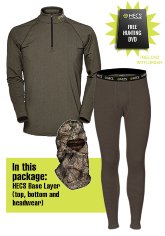
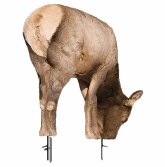
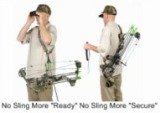
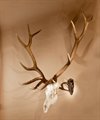
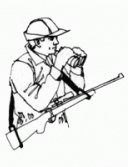
New! Comments
Leave a comment in the box below.